Walking Through History in Girona, Spain
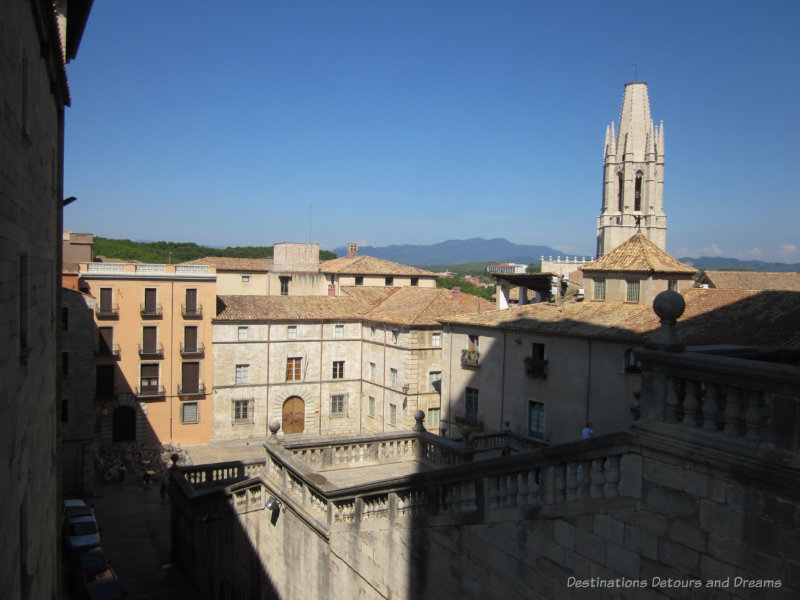
A walking tour of the medieval centre of Girona, Spain, a European city steeped in history
Located in the northeastern Catalonia region, the city of Girona is one of the most historic sites in Spain. In the guided walking tour I took through the city’s compact medieval core, I discovered medieval city walls, charming narrow alleyways full of history, cobblestone streets, the best-preserved medieval Jewish quarters in Spain, architectural landmarks, and lovely squares with outdoor cafés.
Situated at the conference of four rivers (Ter, Onyar, Galligans and Güell), Girona began as an Iberian settlement. The Romans built a citadel and named the town Gerunda. It’s position along the Via Augusta between Cadiz and Rome made it a popular stopover spot for the Romans. Because of its strategic location, it was fought over many times throughout history, earning it the nickname “the city of a thousand sieges.” Girona was ruled by the Visogoths and later the Moors. Charlemagne captured the city in 785 A.D. Girona became one of the principal districts of Catalonia. More than twenty sieges occurred over the subsequent years and Girona was captured seven more times.
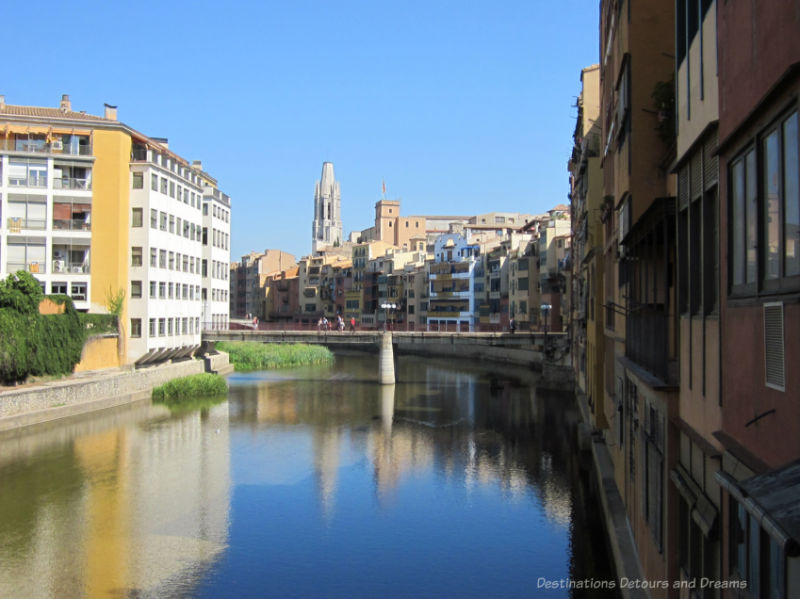
Today, a modern cosmopolitan city spreads out around the historic centre, known as Old Town or Barri Vell, which means “Old Quarter” in Catalan. Old Girona is bordered on the east by the river Onyar. Several bridges cross this river to take you between old town and new town.
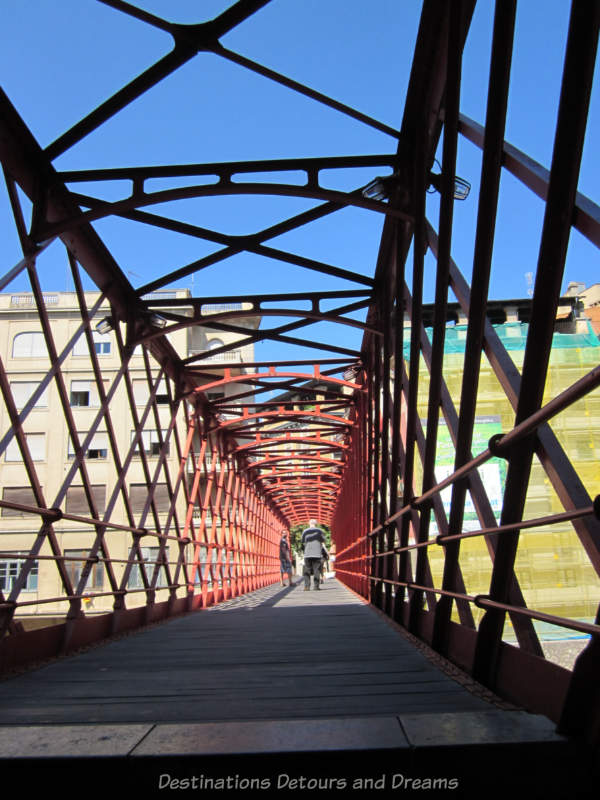
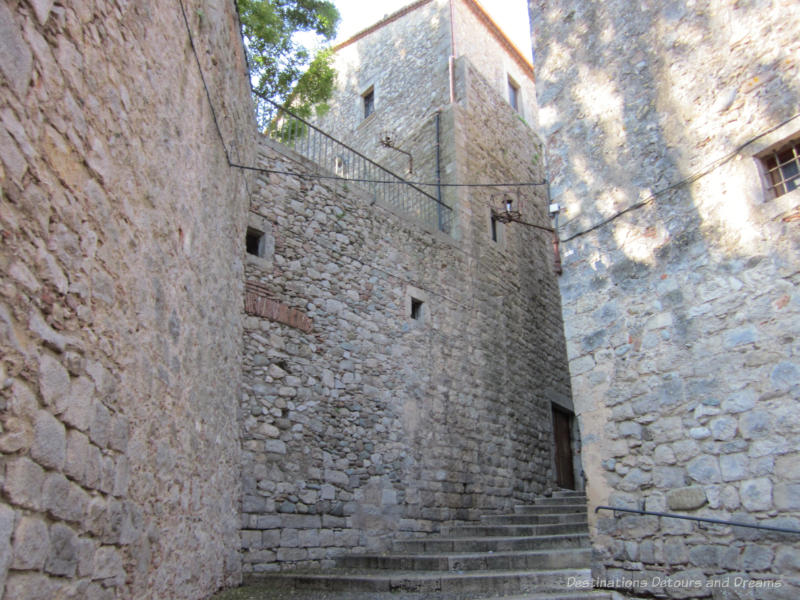
In the first century B.C. the Romans built a fortress with an almost triangular perimeter known as the Força Vella. Parts of that wall can still be seen today. Extensions to the wall were done in medieval times.
Narrow streets and alleyways, many of which are cobblestoned, meander through the Old Quarter. You’ll come across stone walls and stairs taking you to other levels.
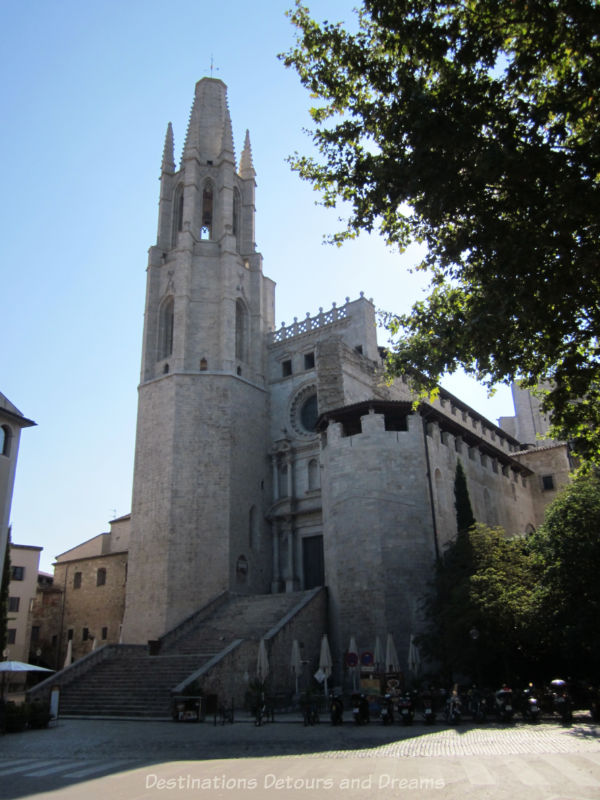
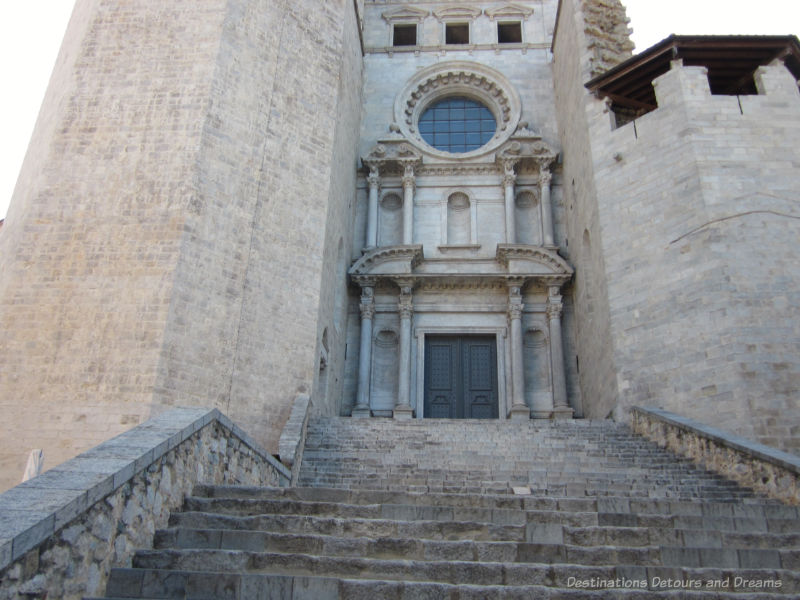
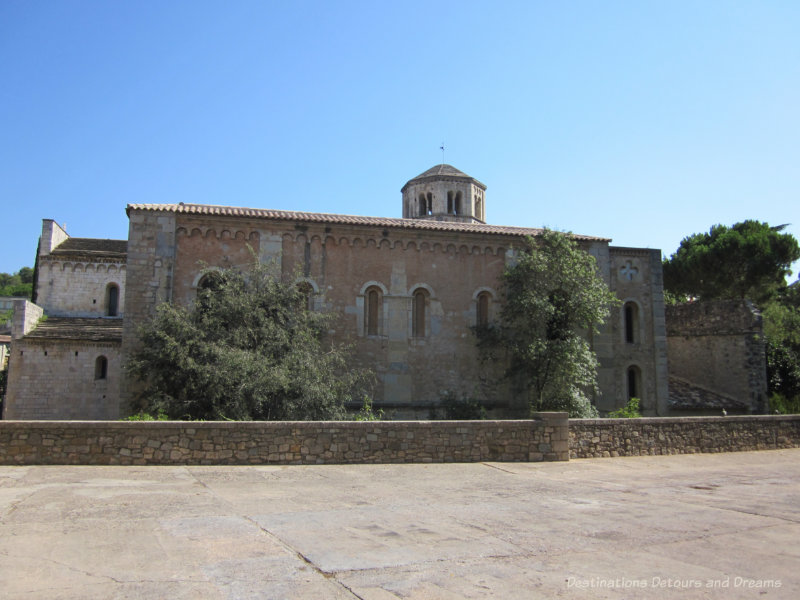
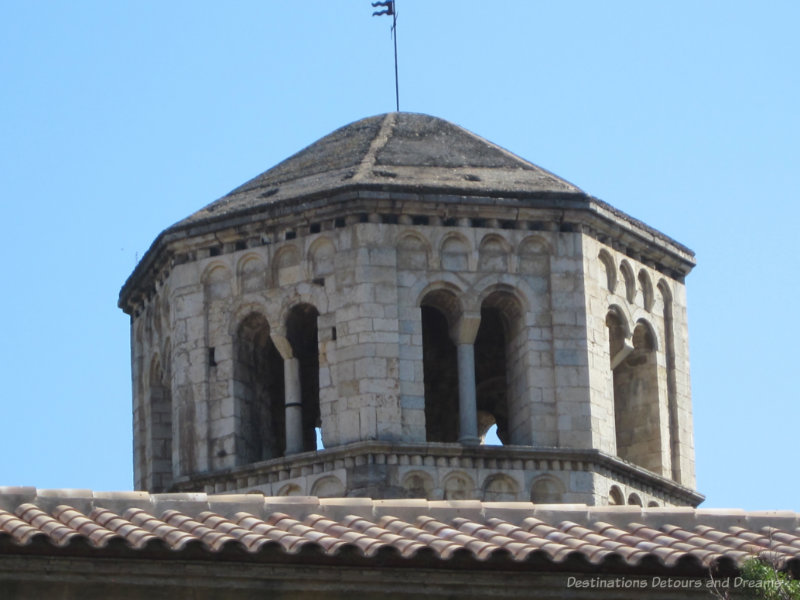
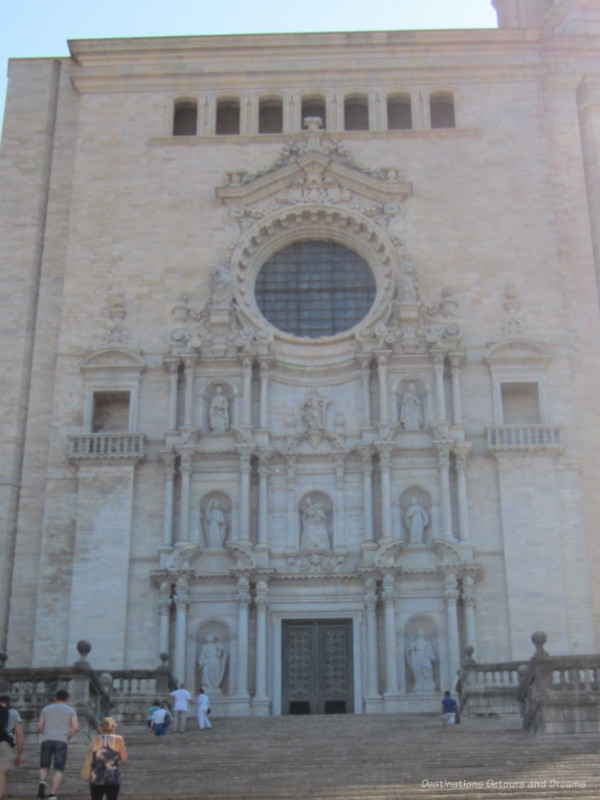
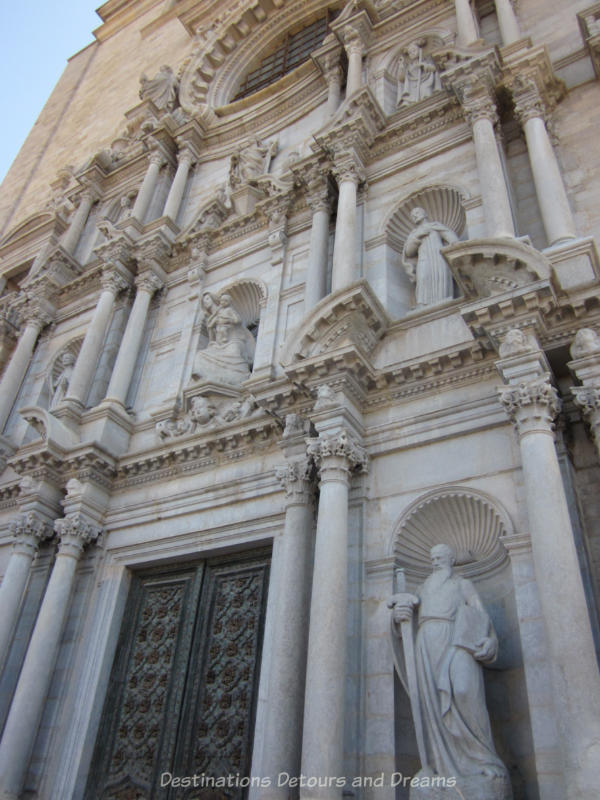
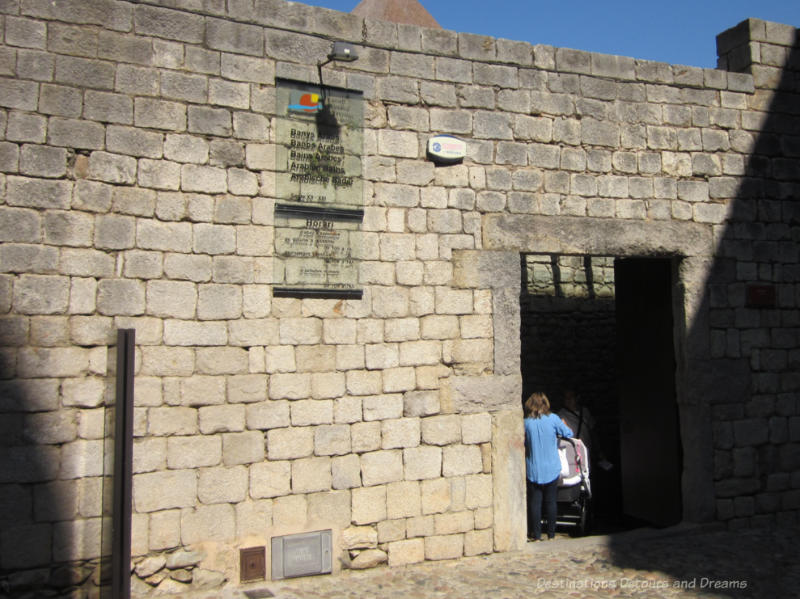
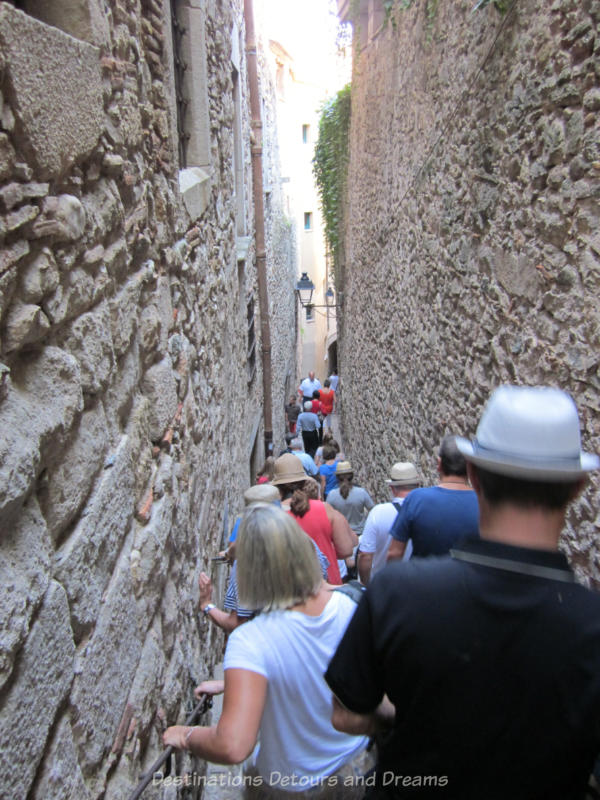
The alleys become even narrower in the Call. The Call, a term which means “narrow streets” was once the Jewish Quarter. Girona had a significant Jewish population in Girona from the 9th century through the 15th century. Over 1,000 Jews present at the height of prosperity, artisans, merchants, doctors, bankers, moneylenders, poets and philosophers lived her at one time. By the 12th century, the population had become concentrated in the narrow labyrinth of streets in the Call. The Call was close to the Cathedral, from which clerical authorities could offer protection or, as our tour guide suggested, keep a watchful eye on the Jews.
When the plague swept across Europe in the mid-14th century, Jews became scapegoats. The incidence of the disease was lower among the Jewish population because of their isolation in ghettos and better hygiene due to ritual handwashing. The Call became a place of confinement and discrimination against Jews increased. They were expelled from Girona in 1492. Their homes remained vacant for centuries until new structures were built and gradually buried the Jewish call. Work to uncover and preserve Girona’s Jewish history began in the late 1970s. Today the city is home to a Jewish history museum and a centre for Jewish studies.
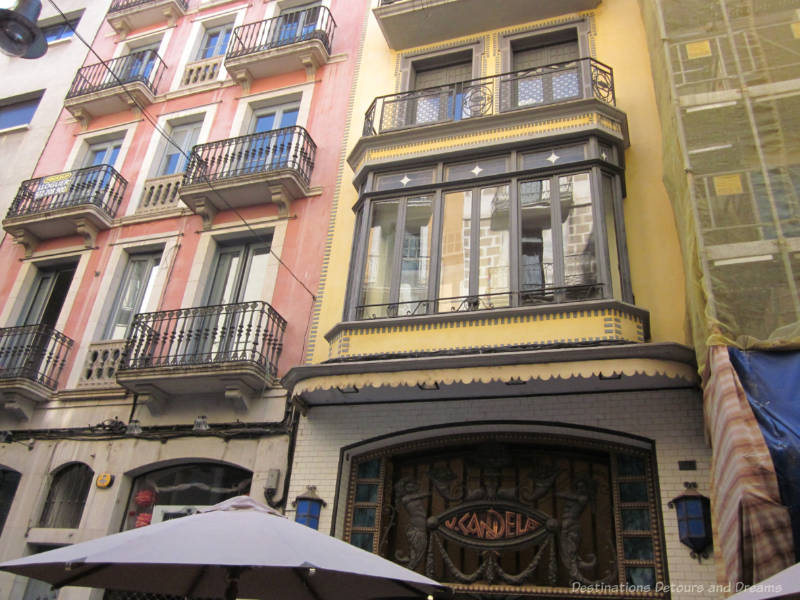
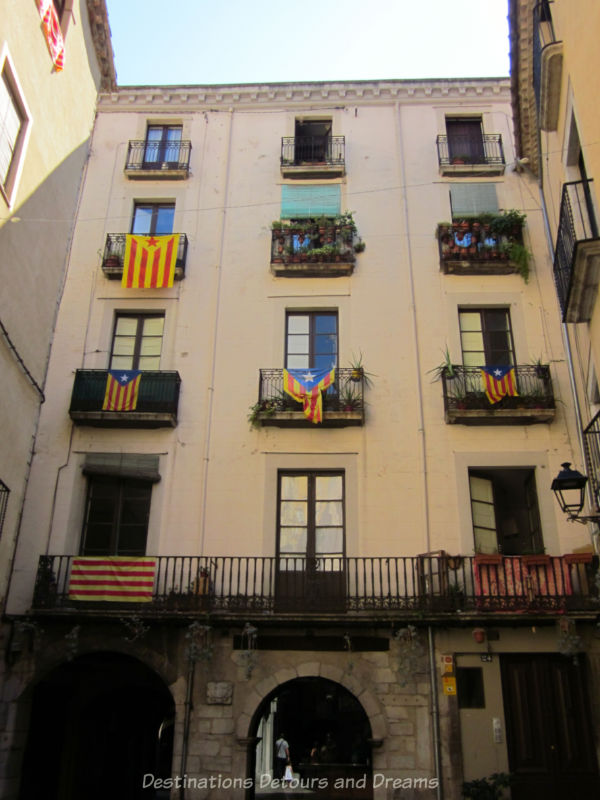
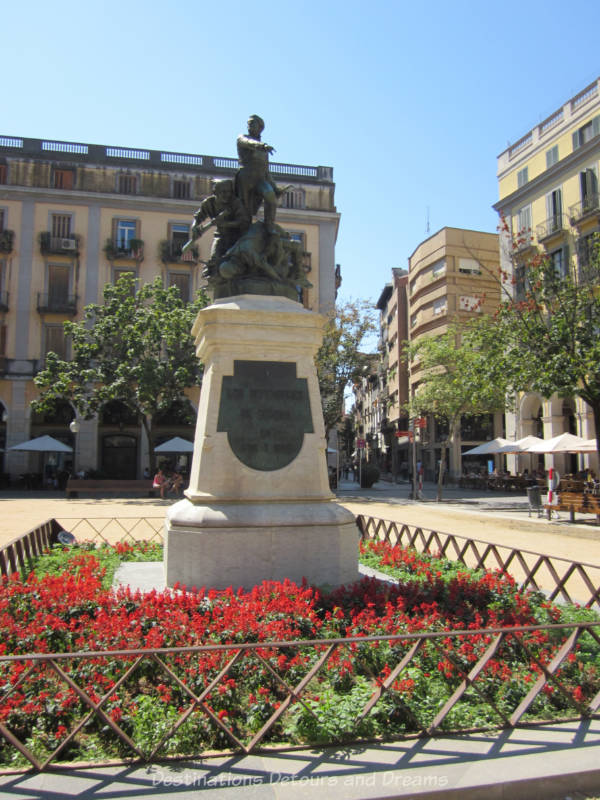
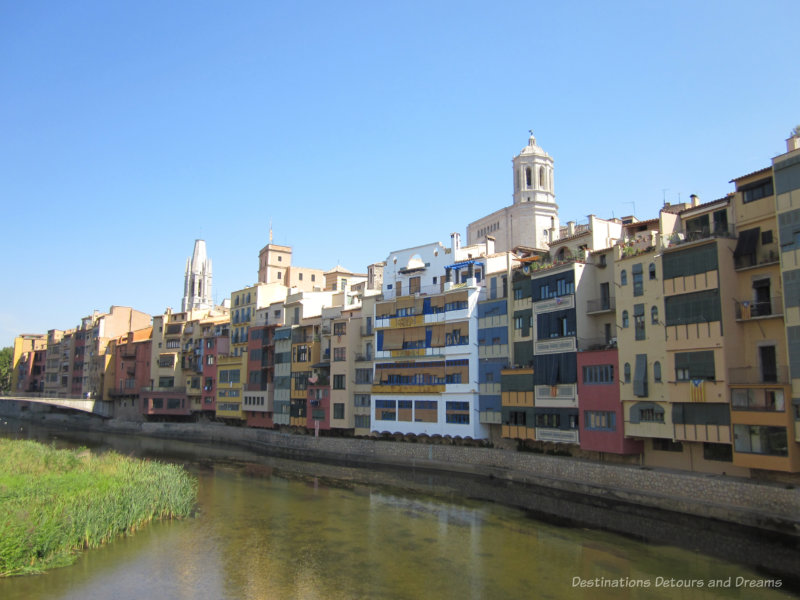
Girona is about 115 kilometres northeast of Barcelona. It can be reached by train, bus or car. Girona is a popular stop on tour company day excursions outside of Barcelona. Old Town is compact and easily walked, providing you wear comfortable shoes (cobblestones) and don’t mind stairs.
Never miss a story. Sign up for Destinations Detours and Dreams free monthly e-newsletter and receive behind-the-scenes information and sneak peeks ahead.
PIN IT
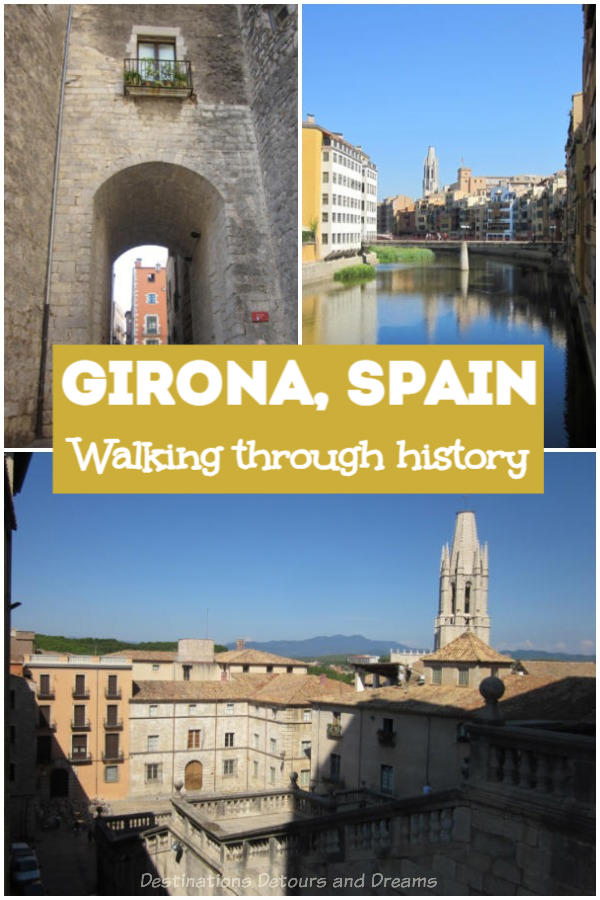

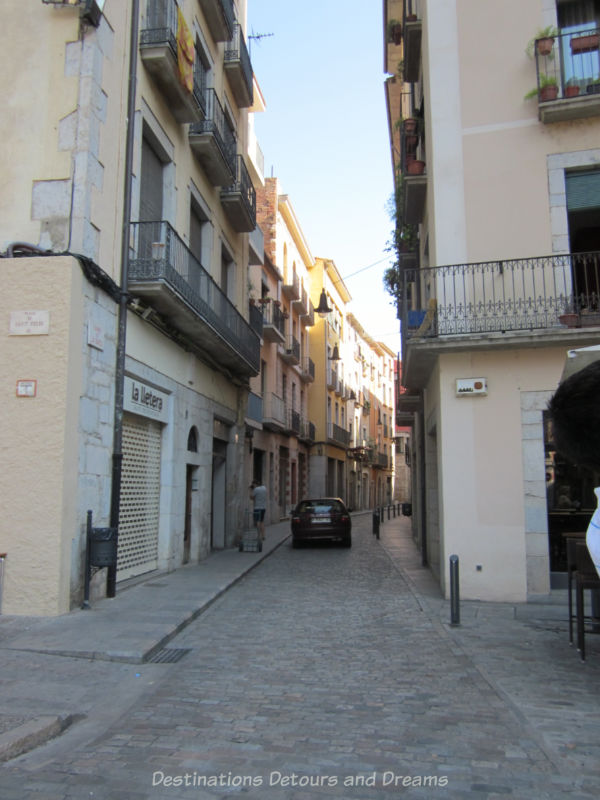
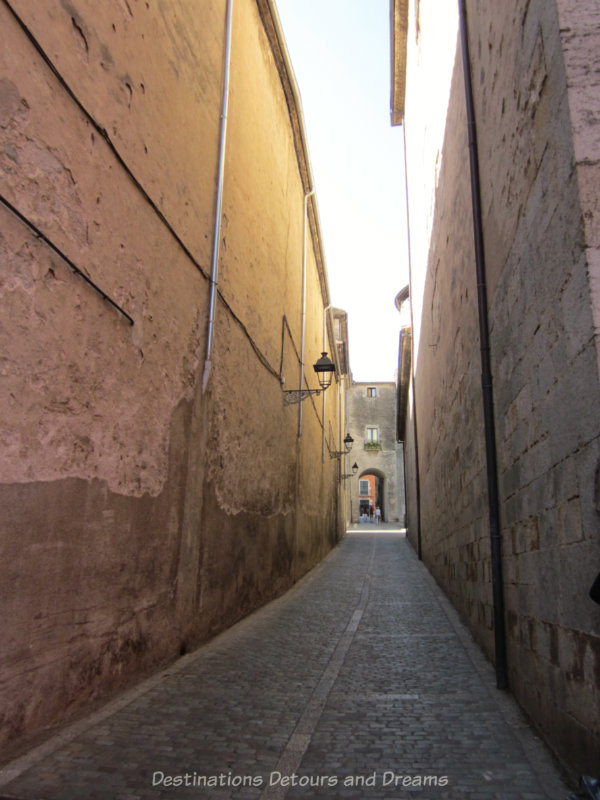
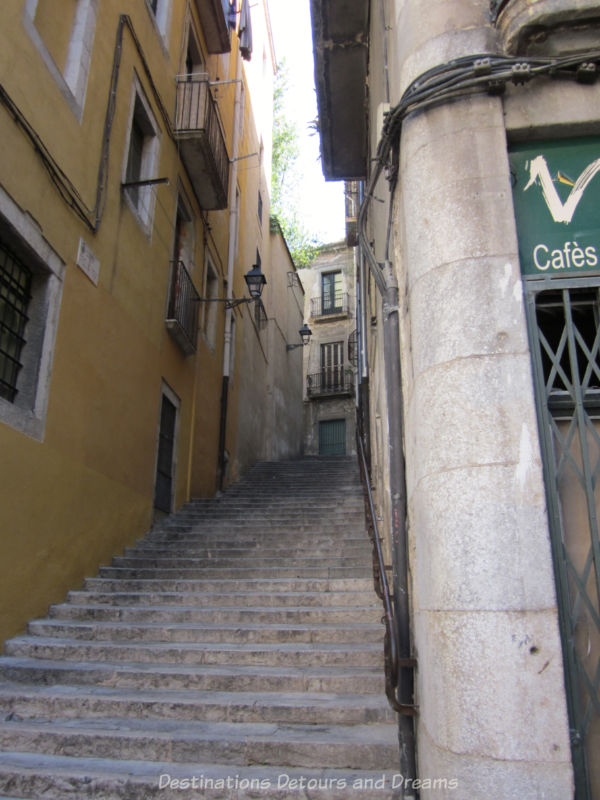
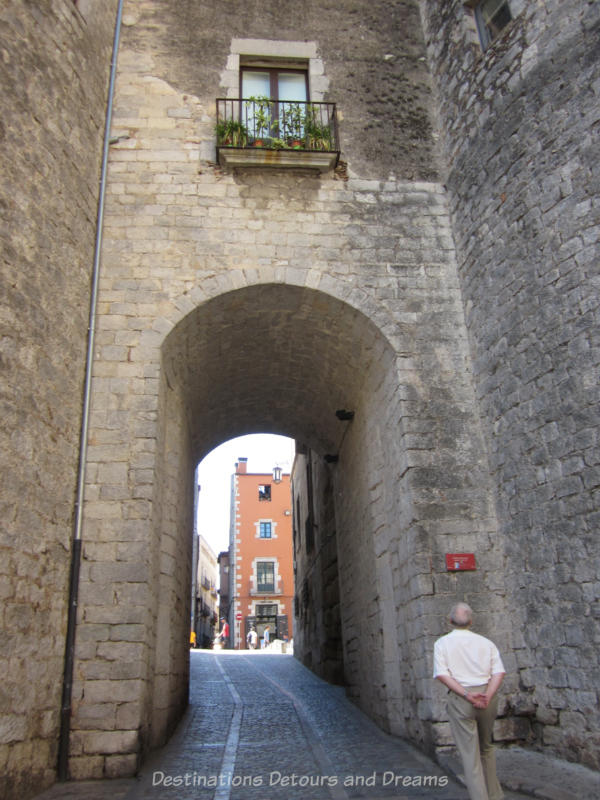
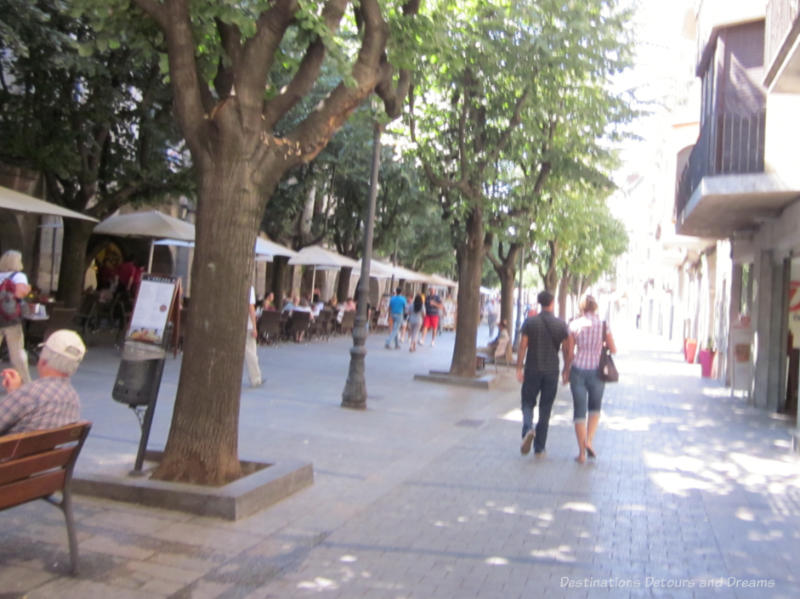
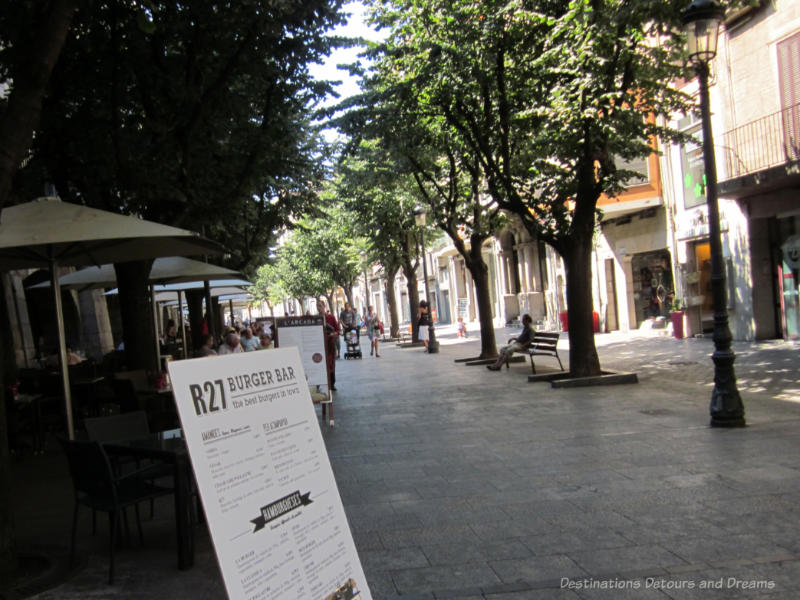
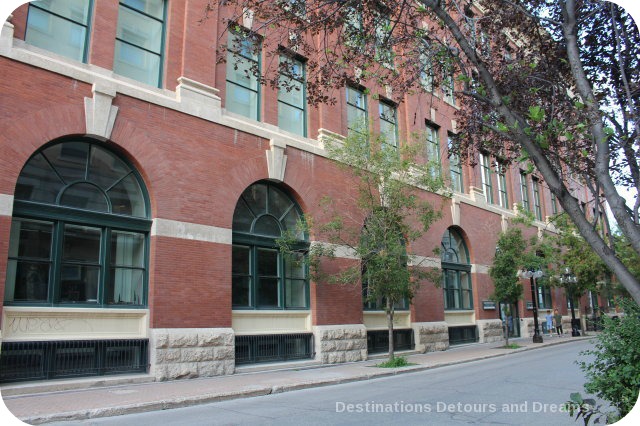
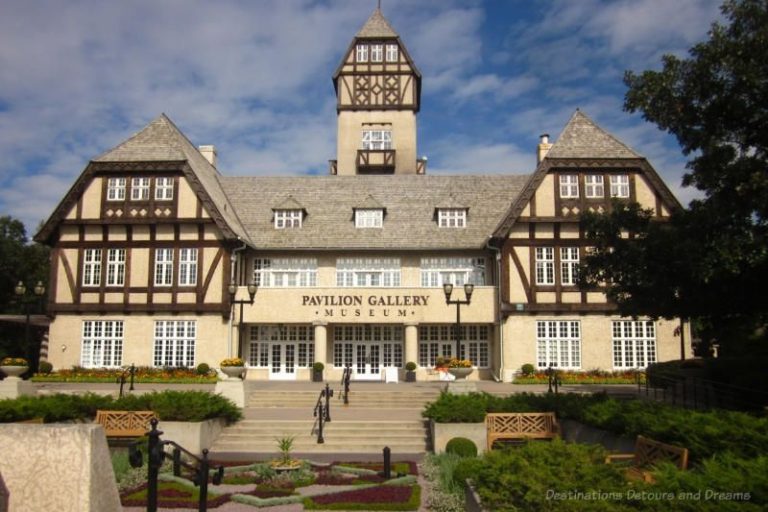
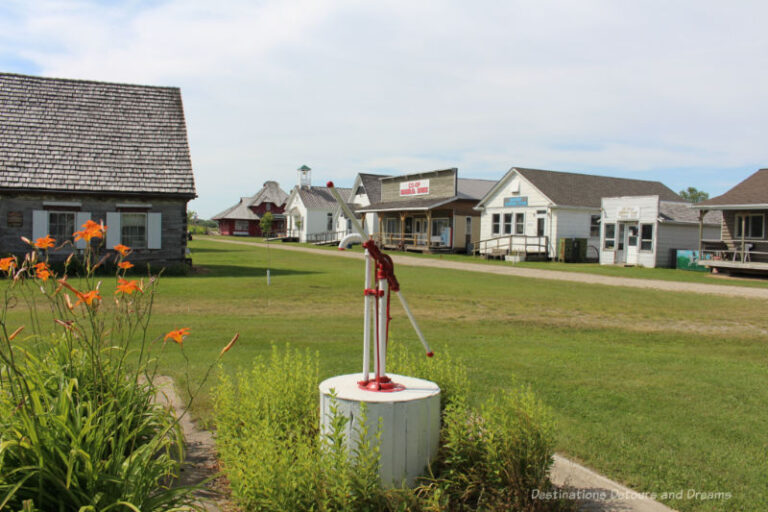


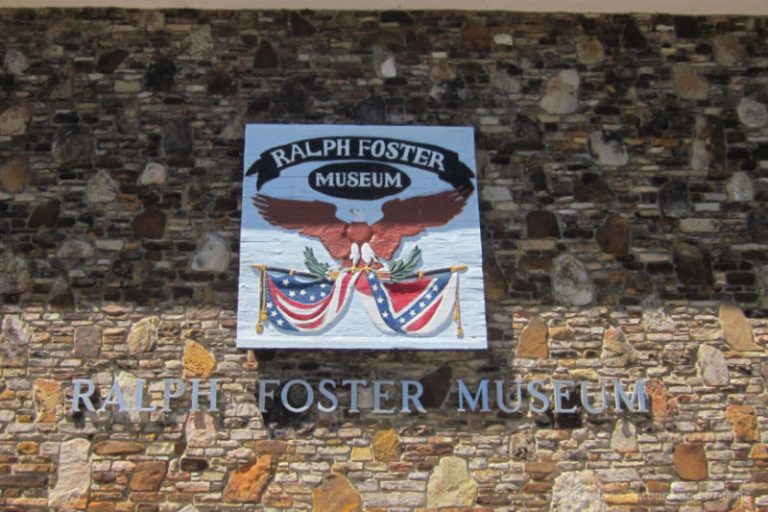
Very interesting! I have never been to Girona…but the pictures are beautiful. I particularly liked the basilica. Very interesting history
Thanks Jacquie.
Hi donna; thanks for taking us along on your walk through girona. it sounds like a well prepared tour that they offer. I can almost hear the ring of swords clashing or monks praying or bells ringing. thanks for sharing, max
Thanks Max. I love your imagination.
Oh wow! I love your Destination blog posts. I always look forward to reading them. Never been to Girona but thanks for taking me along Donna.
Thanks. I’m glad your enjoyed my little tour of Girona.
You make me really want to travel. I’ve never been to Girona, but the architecture is fabulous. It is sad that people could survive the plague, only to be scapegoated for not becoming sick. But as history continually teaches us, a scapegoat is one of the most used tools to combat anger and fear.
Erica, it is sad that people have so often made scapegoats of innocent people. Sometimes we don’t learn from history and continue to look for scapegoats. You’re right – it is often driven by fear.
First cathedral of Girona – beautiful.
I love the monument in what looks a square. The flowers surrounding it adds to the beauty.
The narrow streets and alleyway would suffocate me as I am claustrophobic. I can see myself running from one end to the other!
Thanks for sharing.
Phoenicia, I’m glad you enjoyed the photos. I tend to feelings of claustrophobia in certain situations, but didn’t feel at all claustrophobic in the narrow streets and alleyways. Perhaps that is because there was open sky overhead. But I know claustrophobia affects different people in different ways.
Donna, you do present the most beautiful photos. I love the one of the monastery and was awed by the cathedral. Imagine the workmanship in that building. Unbelievable.
But the story of the Jews wasn’t as nice and I’m pleased that they now have a Jewish History Museum and a place for Jewish studies.
Great information – thanks again for sharing.
Thanks Lenie. The workmanship is certainly impressive. Unfortunately, most of our cities have some sad parts to their history.
Another tempting destination! I love your pictures. I was glad to see a handrail on that stairway down in the call. So the Jews were scapegoats because they didn’t get sick in as high numbers as others? How stupid is that!
Thank Beth. As Erica pointed out, making scapegoats of innocent people if often driven by anger and fear. I still agree with you that it is stupid.
Spain has a lot to offer. Lived and worked there but have to admit, I have never visited Girona. Or if I have I have forgotten. Good photographs.
Thanks Catarina. I certainly would like to get back to Spain and explore more of it.
What a wonderful photo tour, thanks for sharing with us! I love all those medieval castle walls. You can see how many structures were built to withstand all those sieges. Adding Girona to my travel list…
Thanks Meredith. Not all of the wall and buildings survived the sieges intact. Many parts of the wall have been rebuilt over the centuries. In places at the bottom of the way were stones that dated back to Roman times that our guide pointed out.
Interesting history. I guess all those high walls come in handy if your going to be subject to siege that often.
Ken, the high walls may have helped, but certainly didn’t completely protect the city from the sounds of it.
I especially like hearing about the Jewish Quarter of Girona. My husband told me about a tour of Jewish Spain – it is so large, you fly from one city to another (another tour was of Italy – that one was by boat). I have quite a few friends who are descended from Jews who had leave Spain, their home for many generations, in 1492. Now that they have been offered citizenship, one of my friends who lives in NY is thinking of taking them up on it. We told him if he does so, we will come visit!
Leora, if I had a friend who moved to Spain, I would certainly be planning a visit.
Loved your beautiful photos and virtual tour of Girona. The history and architecture of this Spanish city is fascinating with its narrow, winding streets and towering walls to protect it from invasion. My favorite kind of post to read!
Thanks Anita. The narrow, winding streets with all the stonework were interesting to walk through. It felt like stepping back in time.
Your posts on Spain continue to keep it high on the list of country’s I someday hope to visit. All of that hand stonework is amazing and speaks so much for the craftsmanship that goes into things built to last. Narrow streets like that are fun to wander around for hours.
Jeri, I agree that narrow streets like this are fun to wander around, especially as they twist and turn and you never know what you might discover.
Fascinating Donna! Spain is one country I have missed so far. We were actually heading that way from France a few years ago, but fell in love with Cannes so we extended our stay there and cancelled Spain. One of these days. Love your photos, but I have to admit the very narrow streets would probably get to me pretty quickly.
I haven’t been to Cannes – maybe I’ll get there someday and you’ll get to Spain.
I always love a post with historical facts and pictures Donna. Seems to me though that if I lived in a town with the nickname “the city of a thousand sieges” I may want to consider a move 🙂
Thanks Tim. “the city of a thousand sieges” doesn’t sound like a place one would be anxious to move to either. But i’s a pretty, interesting place now.
I’ve never been to a city where the streets were that narrow. It looks very interesting.
I’ve visited a few cities with narrow streets, but a couple of the alleyways in Girona were the narrowest I think I’ve seen.
Great pictures as always. The info on Jewish Quarter of Girona was fascinating. I hadn’t heard about that before. It is nice they are finally working to uncover and preserve this chapter in Jewish history.
Susan, I also found it interesting that the Jewish history had become lost for so many years. It is nice to see it uncovered now.
We love Spain. Unfortunately we never made it north of Barcelona. I was looking into visiting the towns along the Costo Brava, but never made. At some point we will and I have to say your pictures reinforced it. I love the old streets. I had no idea about the Jewish history in Girona.
Arleen, this was my first trip to Spain and I was mostly in Barcelona. I want to go back and explore more of Costa Brava and the rest of the country.
Another great post. I like reading the history you provide, and also the pictures. I am always fascinated by the architecture of the Middle Ages and the renaissance. It is amazing at what they could do with simple tool.
William, it certainly is amazing to see what was built with simple tools.
Hi Donna. I wasn’t familiar with Girona, but it looks beautiful! When planned out thoroughly, tours can be the best way to soak up all that a site has to offer.
I like when tours give you history, background and a few interesting stories about what you see.